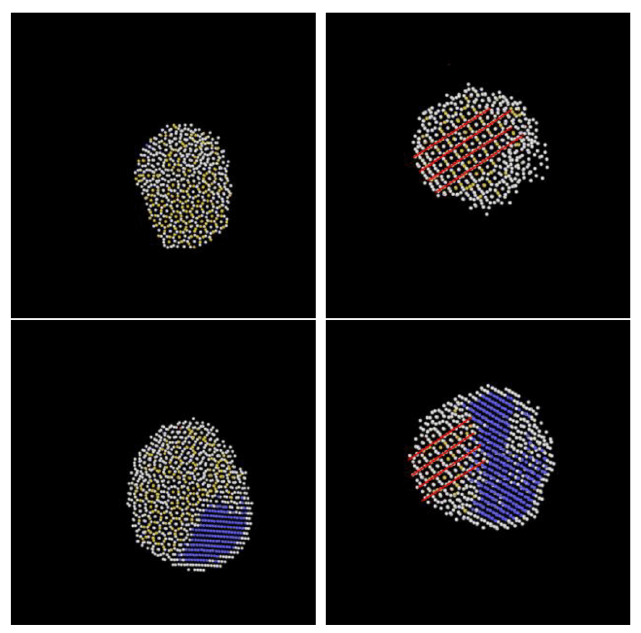
Frigyes Podmaniczky1, László Gránásy1,2
1Institute for Solid State Physics and Optics, Wigner Research Centre for Physics, P.O. Box 49, Budapest H-1525, Hungary
2BCAST, Brunel University, Uxbridge, Middlesex, UB8 3PH, United Kingdom
We present recent advances in phase-field crystal (PFC) modeling of crystal nucleation in simple undercooled liquids, where dynamics is based on hydrodynamic density relaxation, as opposed to the diffusive dynamics in colloid systems. Herein, we address two-step nucleation, the nucleation of new grains at the growth front, and crystal nucleation on the surface of foreign particles in flow. Owing to the different numerical complexity of these problems, we consider three different realizations of the hydrodynamic approach that are optimized to deal with the individual tasks. We show that during two-step nucleation taking place at high supersaturations, amorphous and layered two-dimensional quasicrystalline domains form simultaneously in the first stage, which is then followed by bcc nucleation/transformation of the existing solid into the stable body-centered structure. Next, the formation of satellite crystals at the solid-liquid interface, observed in molecular dynamics simulations are studied. We find that the interference of density waves ahead of the rough growth front may assist the formation of such satellite crystals. Finally, we show that, under appropriate conditions, fluid flow may tear off heterogeneously nucleated crystal particles from the surface of a curved substrate, as envisaged for colloidal systems.


